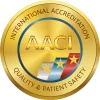Most of us recognise that we are hooked on our devices, but few understand the science behind why they’re so compelling – and the significant effects they have on how our brains work. Understanding the digital dopamine phenomenon is important in protecting your health.
At this very moment, you are looking at a screen. Chances are, you’ve interacted with this same screen multiple times today, sometimes just as a quick glance in response to a notification buzz, and other times for your work, or an email, or maybe a mindless scroll through social media. You might have asked yourself why it is so easy to just keep scrolling when you know you’ve got other things to do – or why it is so hard to stop checking your phone every few minutes. The answer lies deep inside our brains, specifically with a key neurotransmitter – dopamine.
Dopamine helps motivate us to do things that are enjoyable, sending messages that help us link an activity or a substance with pleasure. In this age of highly portable technology, where instant gratification lies just a tap away, or where distraction from boredom or stress is as simple as scrolling down, dopamine boosters are in vast supply online. Knowing how this “digital dopamine” affects us – and how to “detox,” can have significant positive impacts on your mental health.
Understanding Dopamine, the “Reward Chemical”
Dopamine is a specific type of neurotransmitter, a chemical messenger in the brain that helps neurons communicate. It is well-known for its key role in the brain’s reward centre. Dopamine motivates us towards that which we perceive as pleasurable, increasing during both the anticipation of a reward and the actual receiving of one. This feeling pushes us towards a piece of chocolate when we’re hungry, a beer when we feel stressed, or sex when we are aroused.
Once we’ve gotten what we wanted, there’s a natural, temporary dip in dopamine that often triggers a craving for more – reaching for another beer, for example. If we are not addicted to a substance or an activity, the brain can move on quite quickly as dopamine levels return to a normal state and our logical thinking influences our next mental step forward – deciding “I need to stop drinking because I have to drive home,” for example.
For those that have developed a substance use disorder or a behavioural addiction, it’s far more difficult to resist these urges. This is because the flow of dopamine in addiction is unnaturally increased, creating a stronger pull towards something and resulting in an even more potent “crash” when the object of the addiction is no longer available. This process is what makes dopamine a critical factor in the development of addiction, and predicting addictive potential. The more dopamine that is released, the more likely it is that the activity or substance which stimulates that flow could become addictive.
The Rise of the Digital Dopamine Addict
So, what does dopamine have to do with our digital technology? A significant portion of most people’s technology use has to do with entertainment or validation, both pleasure-seeking activities that stimulate the brain’s reward centre and involve dopamine. With technology, the potential to access something interesting or rewarding, and then immediately satisfy a craving for more, is almost limitless. You are just a click, swipe or scroll away from another post, video, or game. The autoplay option lets us slip into hours of binge-watching without even lifting a finger.
While our smartphones don’t stimulate the same high levels of dopamine that drugs like opioids do, they are constantly accessible. This 24-7, never-leaving-the-palm-of-your-hand availability is part of what drives the subtle addictive behaviours around technology use, turning us into digital dopamine addicts. There are few of us who haven’t suddenly looked at the clock and realised we’ve spent an hour or more surfing through clickbait. On these handheld machines, the online games, shopping, porn, and social media never run out. Not knowing what pleasures or excitement may await us next keeps us in a constant state of anticipation, always scrolling for that next burst of dopamine.
Digital dopamine and social media
Part of what makes social media platforms so compelling to users is also linked to how they interact with the brain’s reward centre and the release of dopamine. The ability to like and share content creates a sense of reward and validation for those who have posted, driving the creation of additional content and fueling compulsive monitoring of those platforms for positive feedback. Notifications ensure that we stay focused on these apps, with the anticipation of the next buzz or ping steadily stimulating dopamine.
Social media addiction has gained more attention in recent years, as the mental health impacts of excessive social media use are becoming more apparent. While there are distinct benefits to social media in forging new connections, fostering easier methods of communication, and creating public platforms to discuss and provide support on a wide variety of issues, there are also downsides.
With regular, real-time updates always available, social media platforms often play on users’ FOMO, or fear of missing out. Displays of highly curated, retouched or filtered photos and videos cultivate a false set of aesthetic or lifestyle standards by which other users may compare themselves. This can drive feelings of low self-worth and self-esteem, as well as depression and anxiety.
The constant stimulation of dopamine offered by social media and other online interactions also has negative effects on the brain. These can include things like a lowered attention span, reduced productivity, and poor sleep. Always looking for the next dopamine fix online also has significant impacts on interpersonal relationships, as those struggling with technology misuse are often distracted and disengaged, leading to tension or conflict and potentially deteriorating the quality of relating with others. Awareness of digital dopamine and its effects allows us to better assess our use, and take action to build healthier habits.
Embracing a Digital Dopamine Detox
Undergoing a “dopamine detox” helps restore the brain’s natural levels of dopamine, which can have profound impacts on your outlook and ability to fully engage with your life. Some of the key benefits of normal dopamine levels include:
- Longer attention span
- More resilience due to a lessened need for instant gratification
- Better sleep
- Better ability to self-regulate
- Healthier interpersonal relationships
- Improved productivity
- Increased ability to think creatively and problem-solve
Essentially, cutting off the brain’s supply of digital dopamine and cultivating normal levels of this important neurotransmitter allows you to experience pleasure and enjoyment from a range of activities, including those that involve delayed gratification. This expands our range of interests and allows space for proven, healthy stressbusters like mindfulness meditation and exercise.
A public relations executive, Korkor Kanor, recently shared her experience after a digital dopamine detox with The Guardian. She was feeling overwhelmed by constant notifications and engagement with social media platforms, and decided to take a break by deleting Snapchat and staying off Twitter and Instagram for nine months. During her detox, she noticed improved energy levels, better emotional balance, and an increased ability to be present in conversations with others. She reflected, “I can’t be on [social media] regularly any more. I don’t think that’s healthy for me because it becomes really overstimulating. I feel a lot better when I’m off and then I’m like, ‘Let’s see what’s going on.’”
How to Start a Digital Dopamine Detox
The basic concept of a digital dopamine detox involves abstaining from engaging with a digital device. The timeline and specifics of how this happens can vary greatly from person to person based on their needs and lifestyle. Some guidelines might include:
- Setting a fixed schedule for checking a phone outside of work hours
- Eliminating device use completely during certain times, such as mealtime, social events, an hour before bed, etc.
- Disabling notifications, especially for non-essential apps
- Deleting social media apps
A digital detox can last from days to weeks, but many agree that the first 12 hours are often the most difficult, and can spur cravings, anxiety and stress. However, these initial symptoms of a digital withdrawal do ease over time as the brain’s dopamine levels come back into balance. With your brain no longer specifically attuned to your tech, you can begin to explore how to best allocate your time and mental energy, and discover new ways of managing stress and engaging with others.
Worried You’re a Digital Dopamine Addict? Cultivate Balance at The Dawn

At The Dawn Wellness Centre and Rehab, we understand that the pressures and pace of daily life can easily foster unhealthy lifestyles. For a digital dopamine addict, the sense of escape or connection initially provided by online interactions can become overwhelming and isolating. If you’re struggling to manage your technology use, and are concerned about its impacts on your health, The Dawn can help.
Digital Addiction Treatment in Thailand
The Dawn is a unique, inpatient addiction and mental health treatment centre that uses a person-centred approach to achieve a sustainable recovery. Our professional clinical team works closely with each client to develop a detailed custom treatment plan based on their individual needs and goals. At The Dawn, you’ll benefit from a range of treatment modalities that target mental, emotional and physical healing, including individual and group therapy sessions, fitness training, mindfulness meditation, yoga, art therapy and more.
At our gorgeous riverside location in Northern Thailand, you’ll be able to unplug and relax at our resort-like facilities. Well-appointed with amenities like a swimming pool, fitness centre, yoga studio, massage room and more, you’ll have all the comforts of home a world away from your triggers so you can focus completely on your recovery.
riverside location in Northern Thailand to learn more about how we can help you bring balance back into your life.
Related Posts
 Dopamine Deficiency – How It Ties Into Mental Health and Addiction
Do you wake up each morning and feel as though there is no more spark in your life? If so, you might have what is known as dopamine deficiency. Dopamine...
Dopamine Deficiency – How It Ties Into Mental Health and Addiction
Do you wake up each morning and feel as though there is no more spark in your life? If so, you might have what is known as dopamine deficiency. Dopamine...
 Dopamine Addiction: How Addicts Are at the Whim of Pleasure Chemicals
In pop-culture, dopamine is the media-hyped brain chemical responsible for your addiction to gambling, cake, sex, drugs, love and rock and roll. It seems straightforward: do something pleasurable, get that hit...
Dopamine Addiction: How Addicts Are at the Whim of Pleasure Chemicals
In pop-culture, dopamine is the media-hyped brain chemical responsible for your addiction to gambling, cake, sex, drugs, love and rock and roll. It seems straightforward: do something pleasurable, get that hit...
 Can Connection Really be the Cure for Addiction?
Johann Hari’s NY Times bestseller about the causes of addiction and depression brings a lot to the table. So did his TED talk in 2015 at the TED Global conference...
Can Connection Really be the Cure for Addiction?
Johann Hari’s NY Times bestseller about the causes of addiction and depression brings a lot to the table. So did his TED talk in 2015 at the TED Global conference...
 Nature Vs. Nurture: Which Makes Us Addicted? Both, Actually
Is drug and alcohol addiction inherited? Or is it caused by environmental factors? Most people are aware that addiction seems to run in the family, but you have probably also...
Nature Vs. Nurture: Which Makes Us Addicted? Both, Actually
Is drug and alcohol addiction inherited? Or is it caused by environmental factors? Most people are aware that addiction seems to run in the family, but you have probably also...





